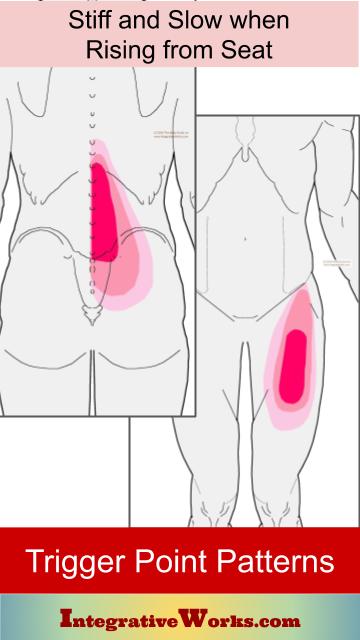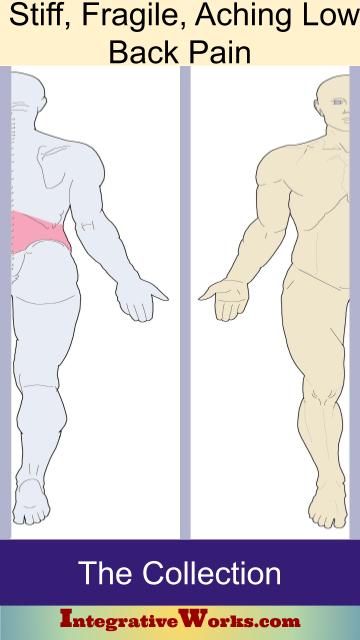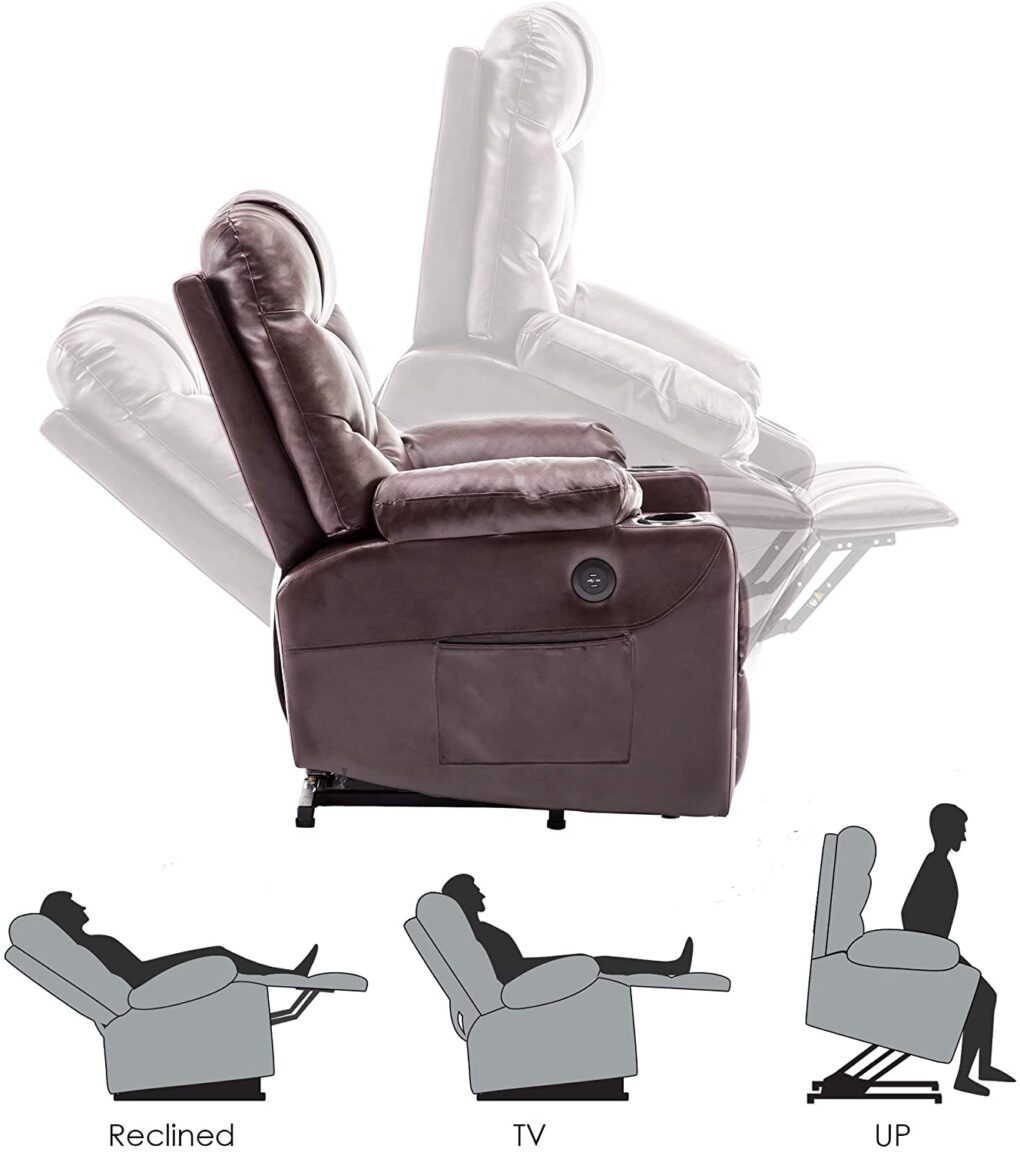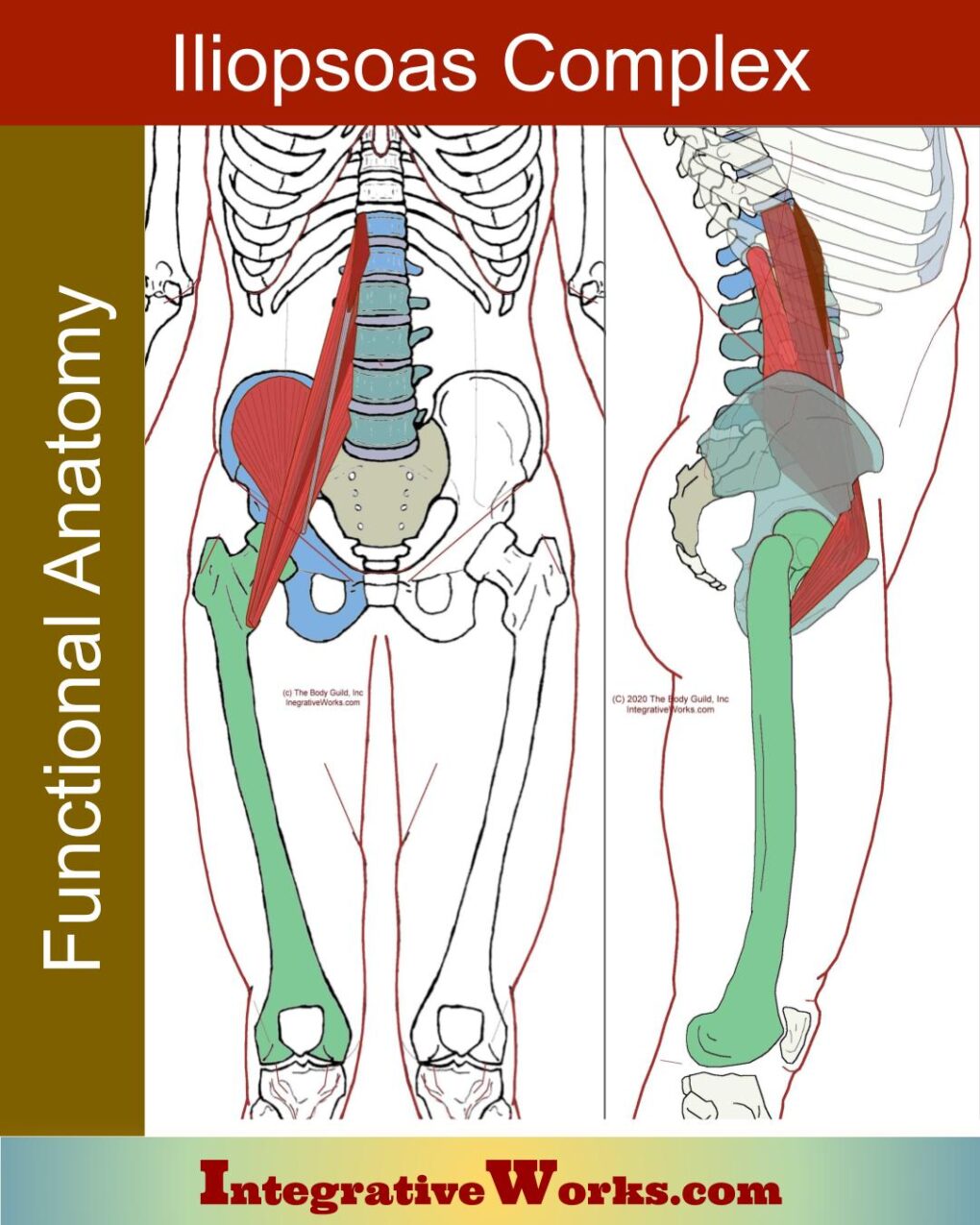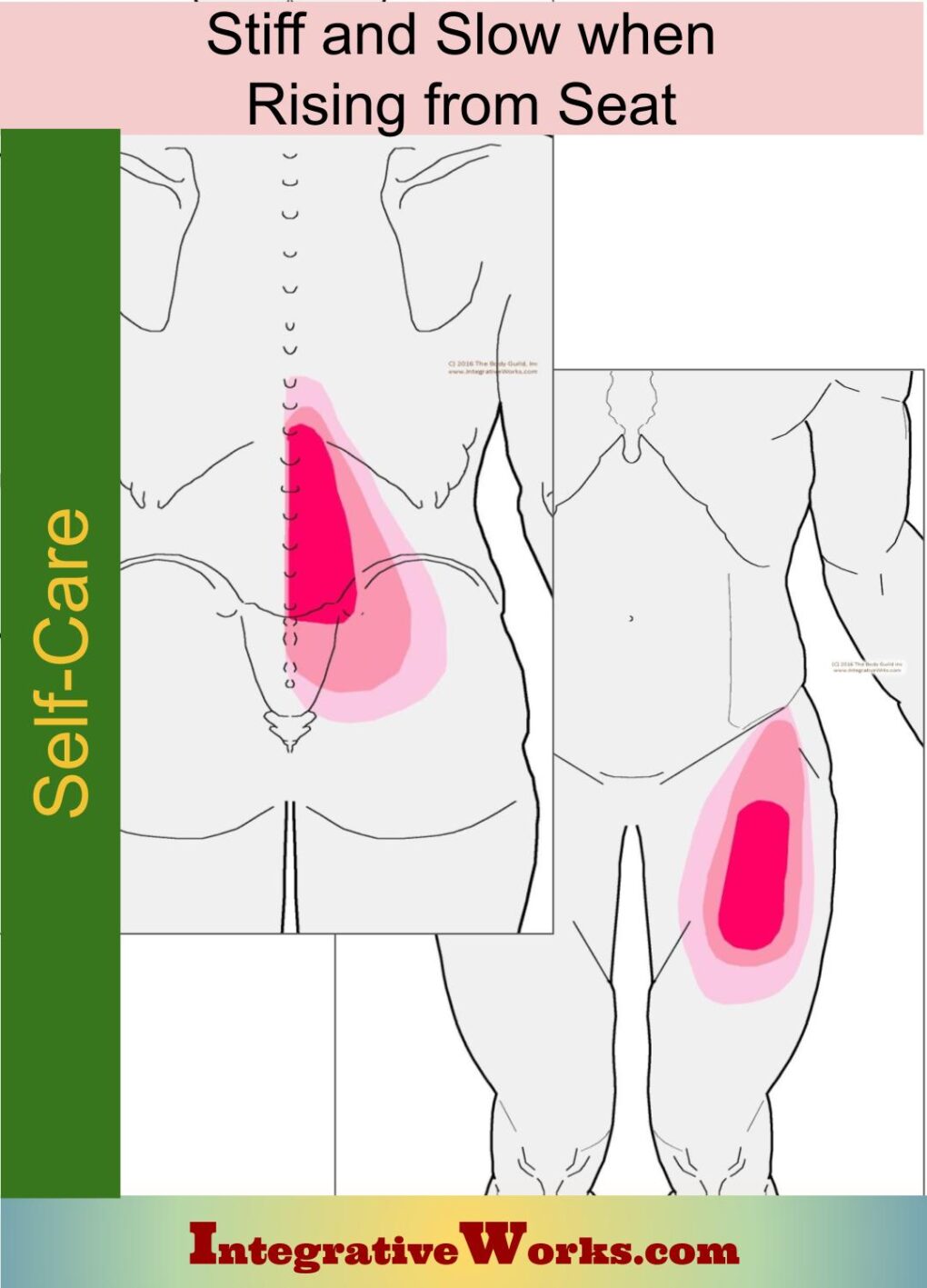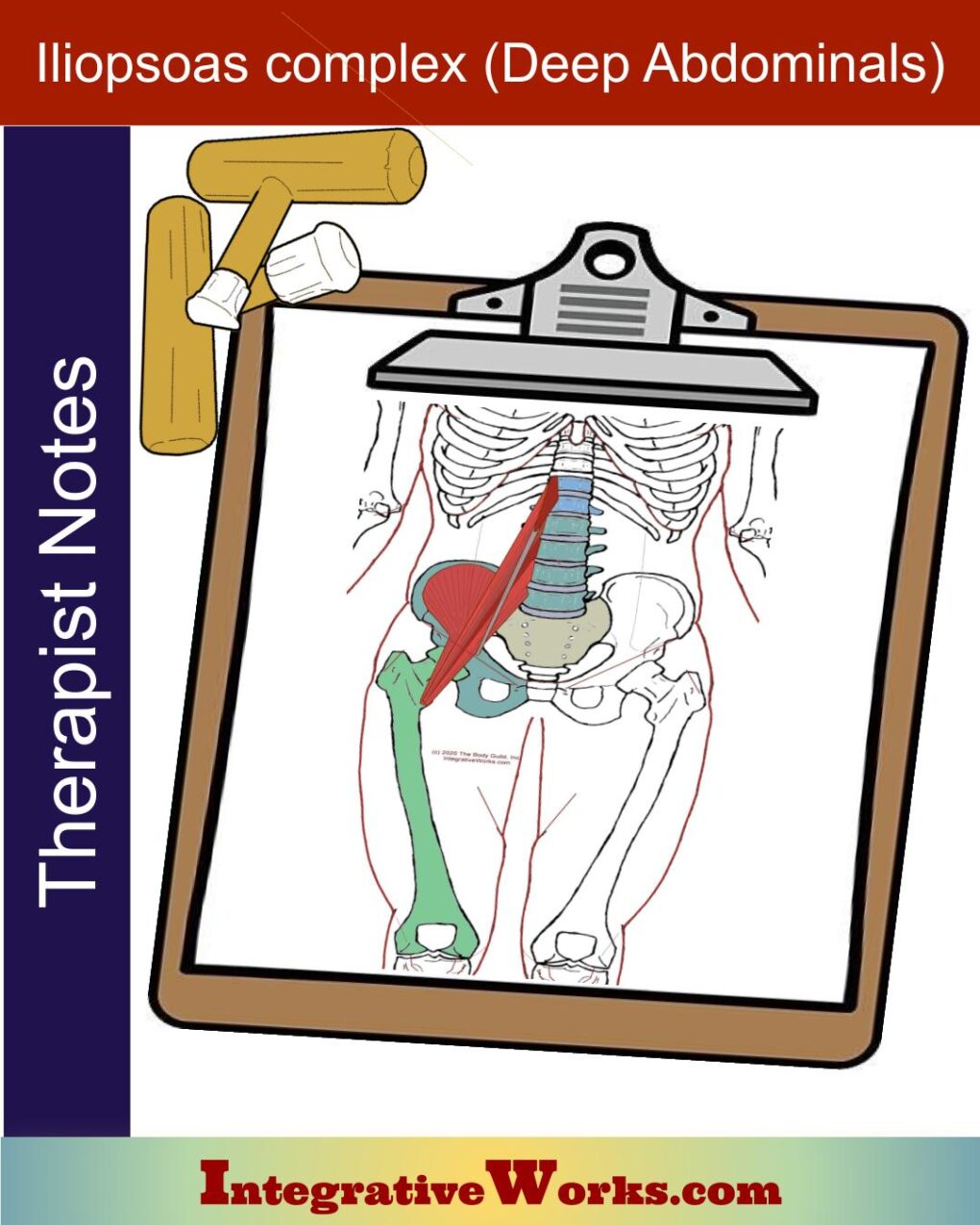Table of Contents
- How People Describe This Pain Pattern
- How You Activate and Intensify This Pain Pattern
- Self-Care – Getting Relief on Your Own
- Musculoskeletal Anatomy Behind Your Pain
- Therapy Notes for Massage and Bodywork
How People Describe This Pain Pattern
These people are stiff and slow in rising from a seat or getting out of the car. The longer that they sit, the stiffer they get. They are often stiff in the morning when rising from bed but speak of it as though everyone has it. They usually avoid being seated and immobile for long car rides, concerts, etc.
When pressed for more information, they usually talk about the stiffness, tightness, and how the muscles feel weak or tired. For example, they can be awkwardly upright when rising from a chair with no arms because their “legs feel tired” or their back is stiff.
When this problem is chronic, these people lean forward when walking.
Very Similar Pain Pattern, Different Muscle
Sharp and Fragile, not Stiff and Slow
These trigger points in the iliopsoas are more likely to be stiff and slow when rising from a seat than sharply painful or fragile. The fragile low back tends to come from trigger points in the quadratus lumborum. Check out this other post with information on those patterns.
Take Care of This Early
Other symptoms often go with this. And they usually get worse as time passes. Stiffer. Slower. More painful when rising from a seat.
Many people consider this problem part of aging and don’t look at the more serious progressions. I was amazed at the number of ads I found for chairs and other devices to help people with this problem.
Prevention Instead of Assistive Devices
I offer some self-care here, which is usually quite effective. However, seek help if this condition does not improve. If not, these “power lift recliners” are in your future.
These people may rely on the car’s door or the arm of the chair to get up. One client had ruined the hinge on his car door, using it to support him as he exited it.
How You Activate and Intensify This Pain Pattern
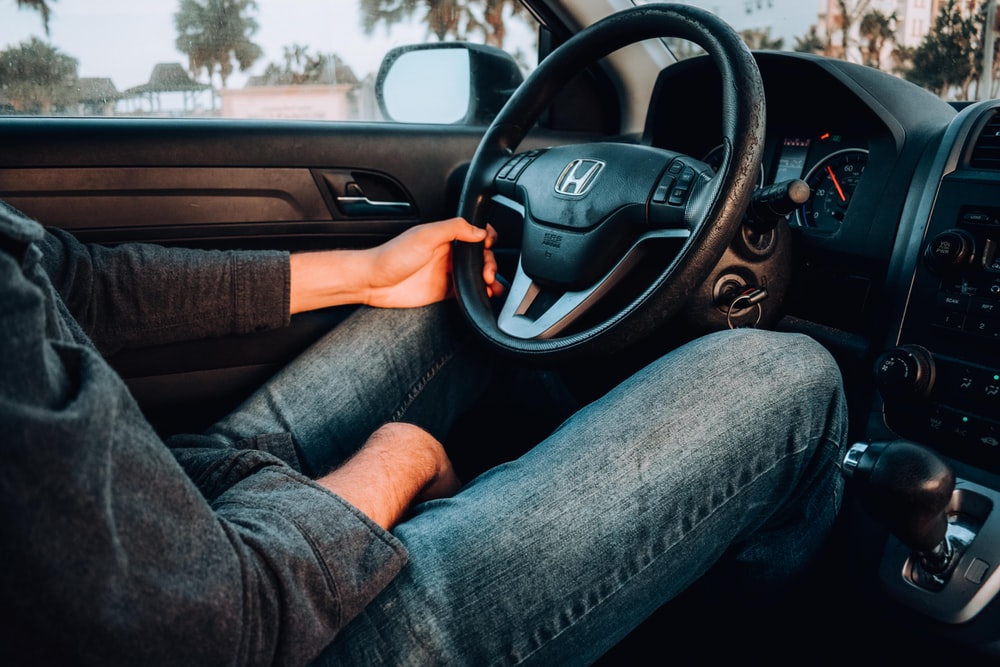
Sit Up and Sit Back
Low seats like soft couches bother them more and are more difficult from which to rise. They often buy SUVs that they neither “sit down into” nor “climb up into.”
This pattern is created by long periods of immobility while the hip is flexed. Often, to make it worse, people actively reach forward across desks to further flex their hips.
Teetering activities like mowing, sweeping, walking up and down hills, and working on a low counter also aggravate this. Almost daily, I talk to someone about how this teetering will aggravate their condition.
About That Ab Work
If you have this, modify your abdominal routine. Instead of crunches and sit-ups, try hanging leg raises or lying leg thrusts. Both of those lengthen the abdomen to give you a long, strong core.
The Musculoskeletal Anatomy Behind Your Pain
Musculoskeletal Anatomy
Iliopsoas Complex
This complex muscle is a common problem in hip pain, thigh pain, low back pain, and disc compression. You can read more about it in this post about the iliopsoas complex.
Getting Relief on Your Own
Clinically Proven
Self-Care Strategies
Self-Care Posts have common sections to make them easy to follow and understand:
- Activities to Avoid or Change
- Strategies for Quick Relief
- Stretches and Exercise for Longer-Lasting Relief
- Yoga Corner
Therapy Notes for Massage and Bodywork
Better Bodywork
Through Shared Expertise
Therapy Notes provide details for cranial, spinal, and local joint work. These notes also link to a traditional neuromuscular protocol.
By treating integrative components first, direct work on the muscle becomes less intense while providing longer-lasting relief.
Support Integrative Works to
stay independent
and produce great content.
You can subscribe to our community on Patreon. You will get links to free content and access to exclusive content not seen on this site. In addition, we will be posting anatomy illustrations, treatment notes, and sections from our manuals not found on this site. Thank you so much for being so supportive.
Cranio Cradle Cup
This mug has classic, colorful illustrations of the craniosacral system and vault hold #3. It makes a great gift and conversation piece.
Tony Preston has a practice in Atlanta, Georgia, where he sees clients. He has written materials and instructed classes since the mid-90s. This includes anatomy, trigger points, cranial, and neuromuscular.
Question? Comment? Typo?
integrativeworks@gmail.com
Interested in a session with Tony?
Call 404-226-1363
Follow us on Instagram

*This site is undergoing significant changes. We are reformatting and expanding the posts to make them easier to read. The result will also be more accessible and include more patterns with better self-care. Meanwhile, there may be formatting, content presentation, and readability inconsistencies. Until we get older posts updated, please excuse our mess.
